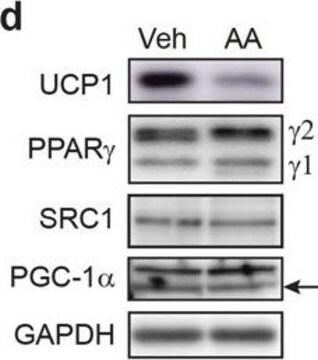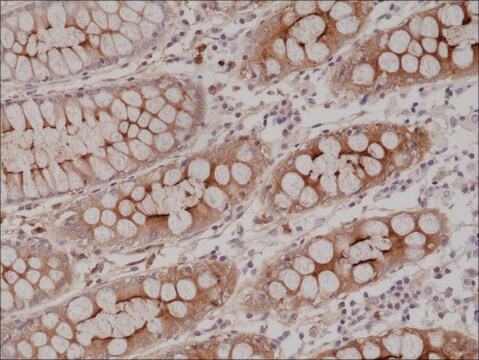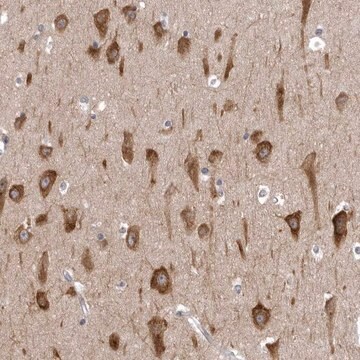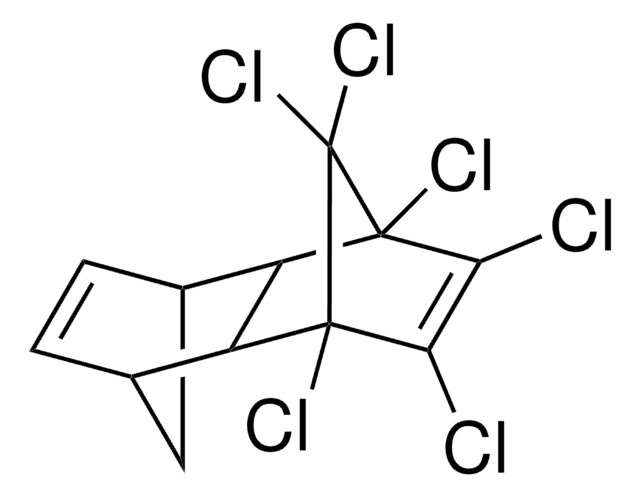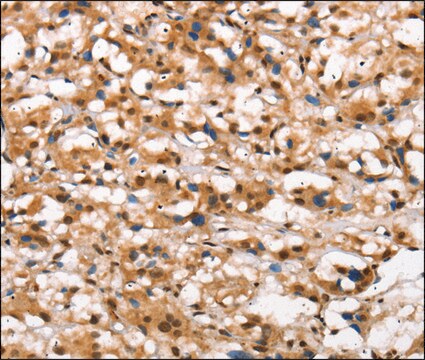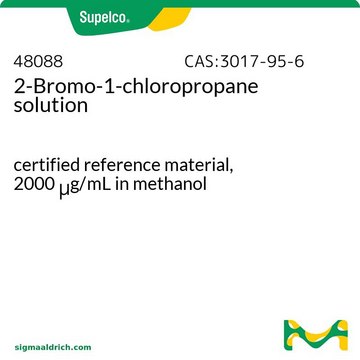P5367
Anti-Par-4 (Prostate Apoptosis Response-4) antibody produced in rabbit
IgG fraction of antiserum, buffered aqueous solution
登录查看公司和协议定价
所有图片(1)
About This Item
共軛:
unconjugated
application:
ARR
WB
WB
無性繁殖:
polyclonal
物種活性:
human, rat, mouse
citations:
10
技術:
microarray: suitable
western blot: 1:1,000 using whole cell extract of the mouse fibroblast NIH3T3 cell line
western blot: 1:5,000 using whole cell extract of the human HeLa cell line
western blot: 1:1,000 using whole cell extract of the mouse fibroblast NIH3T3 cell line
western blot: 1:5,000 using whole cell extract of the human HeLa cell line
推荐产品
生物源
rabbit
品質等級
共軛
unconjugated
抗體表格
IgG fraction of antiserum
抗體產品種類
primary antibodies
無性繁殖
polyclonal
形狀
buffered aqueous solution
分子量
antigen 38 kDa
物種活性
human, rat, mouse
技術
microarray: suitable
western blot: 1:1,000 using whole cell extract of the mouse fibroblast NIH3T3 cell line
western blot: 1:5,000 using whole cell extract of the human HeLa cell line
UniProt登錄號
運輸包裝
dry ice
儲存溫度
−20°C
目標翻譯後修改
unmodified
基因資訊
human ... PAWR(5074)
mouse ... Pawr(114774)
rat ... Pawr(64513)
一般說明
PRKC apoptosis WT1 regulator protein (PAWR) is also known as prostate apoptosis response 4 protein (Par-4). The PAWR gene is mapped to human chromosome 12q21.2. It is a 40 kDa protein expressed ubiquitously in mammals. It was first identified in prostate tumors.It has a leucine zipper domain and nuclear localization sequences. A core domain comprising of region 137-195 amino acids is critical for the apoptotic function of PAR-4. It interacts and modulates the activity of protein kinase C.
免疫原
synthetic peptide corresponding to the C-terminus of human Par-4 (amino acids 324-342) conjugated to KLH.
應用
Anti-Par-4 (Prostate Apoptosis Response-4) antibody produced in rabbit may be used in immunoblotting.
生化/生理作用
Par-4 protein interacts with Wilm′s tumor suppressor WT1 and modulates its transcription and growth suppression function. The gene for Par-4 is down-regulated by oncogenic Ras via the Raf-1- mitogen-activated protein kinase/extracellular signal-regulated kinase (MEK-ERK) pathway in immortalized fibroblasts. Overexpression of the PAR4 gene causes down-regulation of B-cell lymphoma-2 (Bcl-2) in fibroblasts and prostate cancer cells. Par-4 protein plays an important role in neuronal apoptosis. This gene is upregulated in neuronal degeneration and is observed in Alzheimer′s disease.
The primary function of prostate apoptosis response 4 protein (Par-4) is to mediate apoptosis. In neuronal progenitor cells, ceramide and PAR-4 contribute to rapid apoptosis. PAR-4 activates the tumor necrosis factor receptor superfamily member (FAS)-based death signalling caspase cascade to accomplish apoptosis in prostate tumor cells. PAR-4 is considered as a potential drug for treatment of cancer and neurodegenerative disorders.
外觀
0.01M 磷酸缓冲盐溶液,pH 7.4,含 15mM 叠氮化钠。
儲存和穩定性
For continuous use, store at 2-8 °C for up to one month.For prolonged storage, freeze in working aliquots at −20 °C. Repeated freezing and thawing is not recom-mended. Storage in frost-free freezers is also notrecommended. If slight turbidity occurs upon prolongedstorage, clarify the solution by centrifugation beforeuse. Working dilutions should be discarded if not usedwithin 12 hours.
免責聲明
Unless otherwise stated in our catalog or other company documentation accompanying the product(s), our products are intended for research use only and are not to be used for any other purpose, which includes but is not limited to, unauthorized commercial uses, in vitro diagnostic uses, ex vivo or in vivo therapeutic uses or any type of consumption or application to humans or animals.
未找到合适的产品?
试试我们的产品选型工具.
Apoptosis by Par-4 in cancer and neurodegenerative diseases
El-Guendy N and Rangnekar VM
Experimental Cell Research, 283(1), 51-66 (2003)
Nikhil Hebbar et al.
Cancer research, 77(15), 4039-4050 (2017-06-20)
Primary tumors are often heterogeneous, composed of therapy-sensitive and emerging therapy-resistant cancer cells. Interestingly, treatment of therapy-sensitive tumors in heterogeneous tumor microenvironments results in apoptosis of therapy-resistant tumors. In this study, we identify a prostate apoptosis response-4 (Par-4) amino-terminal fragment
PAWR (PRKC apoptosis WT1 regulator protein; Prostate apoptosis response-4, Par-4
Shukla N, et al.
Atlas of Genetics and Cytogenetics in Oncology and Haematology (2016)
R W Johnstone et al.
Molecular and cellular biology, 16(12), 6945-6956 (1996-12-01)
The tumor suppressor WT1 represses and activates transcription. The loss and/or imbalance of the dual transcriptional activity of WT1 may contribute to Wilms' tumor. In this study, we identified par-4 (for prostate apoptosis response) as a WT1-interacting protein that itself
Regulation of cell death in mitotic neural progenitor cells by asymmetric distribution of prostate apoptosis response 4 (PAR-4) and simultaneous elevation of endogenous ceramide
Bieberich E, et al.
The Journal of Cell Biology, 162(3), 469-479 (2003)
我们的科学家团队拥有各种研究领域经验,包括生命科学、材料科学、化学合成、色谱、分析及许多其他领域.
联系技术服务部门
